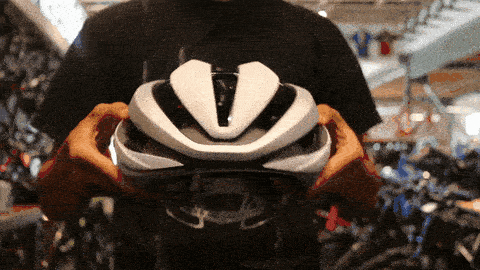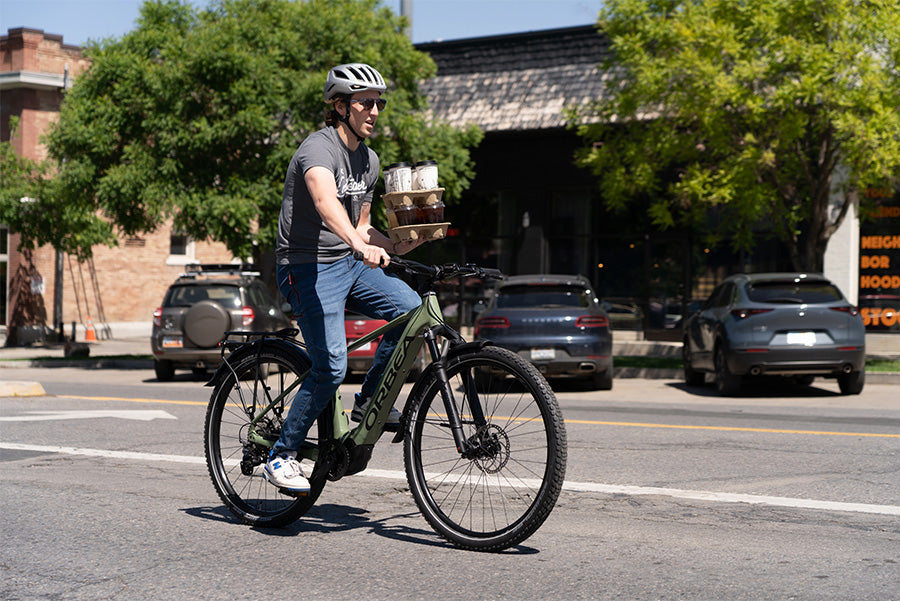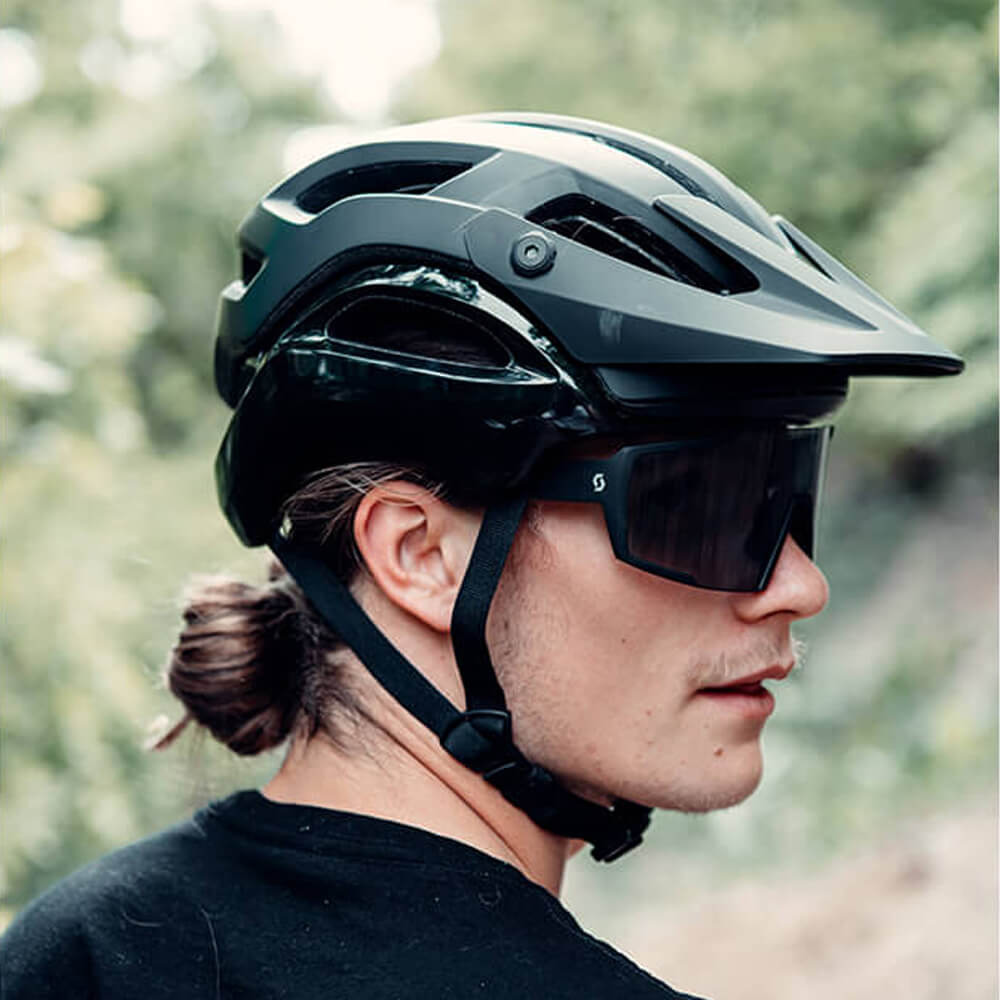
How to Choose Your Next Bike Helmet
Whether you're gearing up for an epic ride, lining up for a race, or just casually rolling through the neighborhood, having a high quality, well-fitting bike helmet is a must for any cyclist. Accidents can happen anytime, anywhere, and there’s no such thing as a minor head injury. Safety comes first, and while all helmets sold in the U.S. must meet basic impact protection standards, there's a whole world of technology, materials, and enhanced safety features to explore when choosing your next helmet.
We’ll take a closer look at the different types of helmets available, how to find your size, and how to best select the appropriate helmet for what and where you ride. We’ll also discuss some recent developments and innovations in how helmets work to protect you and keep you riding. Safety advancements like MIPS, Spherical Technology and KinetiCore have helped make helmets even more effective and easier to wear than ever, and we’ll break down how these systems work and how to choose the best helmet for you. We want to help everyone ride safe, confident and comfortable!

How Helmets Work - The Basics
The primary role of any helmet is to prevent head injuries in the event of an impact to the head. We think of crashes first, but impacts can come from things like tree branches, debris, etc. Helmets work far beyond just hitting the deck! The classic bike helmet setup utilizes impact-absorbing foam, a retention system, and an outer layer of hard plastic. As the cost of the helmet increases, the foam becomes lighter, stronger, and better optimized for impact protection. The retention system should be both comfortable and effective in preventing the helmet from coming off during an accident.
Finding The Right Fit
When selecting a bike helmet, the influence of technology is significant, but the most crucial factor boils down to fit. An ill-fitting helmet can greatly compromise its protective capabilities during a crash. While some helmets may offer a one-size-fits-most option, the majority typically come in sizes like 'small,' 'medium,' or 'large.' It's essential to note however that not all helmets of the same size are created equal. A medium in one brand may fit differently than a medium in another. While many brands cater well to an average head shape, it’s best to “fine tune” your ideal fit by trying on several brands. Helmets from Giro, Lazer, and Specialized may fit very similarly, while each brand employs unique design features that may make one feel and fit better than the other.
For the best guidance on finding the right fit, visiting a local bike shop is highly recommended. The staff can expertly assist you in sizing a helmet properly. However, a bit of homework ahead of time will help the selection process. Using a tape measure, determine the circumference of the widest part of your head, approximately two fingers above your eyebrow. Note this measurement, as most brands have a sizing guide based on this information. This will be a great place to start.
Once you've selected a helmet, snug down the tightening mechanism, usually a knob at the back or top of the helmet. It's vital not to rely solely on this mechanism for a secure fit – the helmet mold itself should sit comfortably on your head.
Next, buckle and tighten the chin strap securely. It's crucial that the strap remains snug, preventing it from lifting over the chin. The helmet should provide a comfortable fit, and the straps should form an even 'V' shape on both sides of your head. In case they don't align perfectly, most helmets feature adjustable straps to accommodate varying head shapes.
If you feel like you fall in between helmet sizes, a good general guideline to follow is to opt for the smaller size. A well-fitting helmet should be snug without creating pressure points on your head. The helmet should sit approximately two fingers (or approximately one inch) above the eyebrow, maintaining a level orientation. Helmets equipped with rotational impact safety systems may exhibit slightly more movement than standard helmets, but any shift shouldn't be more than about an inch. If the helmet moves around more than that, take the time to readjust it until the helmet sits securely in place.

The Advent of Rotational Impact Protection
Helmet safety technology changed in a big way in the mid-2000’s with the advent of the rotational impact protection system (the MIPS system being the first). In short, rotational impact protection systems provide an additional “layer” of head protection to a helmet. Where helmets have long relied on the foam layer to absorb impact energy by crushing and distributing the force of an impact, a rotational layer allows the helmet to slide relative to the head, resulting in a reduction of the rotational motion that may otherwise be transmitted to the brain. The years since the introduction of rotational impact protection systems have yielded a wealth of testing and studies regarding the effectiveness of this additional safety technology. Various types of rotational impact protection systems have also hit the market over the years, and we’ll discuss those below. The takeaway here is that more safety is a good thing, and the additional cost incurred by implementing the extra protection these systems provide is extremely small, considering what you’re protecting.
Understanding Rotational Impact Protection Systems (MIPS, etc)
As mentioned earlier, the helmet industry has seen the rise of safety technology that employs an additional layer of protection against impacts to the head. As brands compete for market share, we the riders reap the benefits in the form of several great options for enhanced head protection. In 2007, MIPS started it all.
MIPS
MIPS, short for Multi-directional Impact Protection System, has become a staple in modern helmet technology. This innovative feature incorporates a thin layer within the helmet, referred to as a slip plane. What sets MIPS apart is its ability to enable the helmet to move independently upon impact, effectively mitigating the rotational motion of the head and enhancing overall brain protection. MIPS proponents suggest a potential 10-60% improvement in handling rotational impacts with MIPS-equipped helmets. Since its introduction, several MIPS variations have also been developed and hit the market:
- MIPS Evolve Core: The most popular MIPS safety system involves attaching a low-friction layer to the inner surface of the helmet’s liner. This layer can move in all directions to redirect rotational motion from the head during specific angled impacts. Renowned for its refined fit and lightweight construction, you’ll find this system in a wide range of helmets, including those for skiing, cycling, and motorsports.
- MIPS Essential Core: In this system, an injection-molded plastic later is situated between the helmet’s comfort padding and its liner. This arrangement facilitates relative movement between the layers, effectively diminishing rotational motion to the head during specific angled impacts. As a simple yet efficient solution, this system serves as an excellent introduction to the MIPS safety system.
- MIPS Air Mode: This system features a low-friction later integrated into the comfort padding’s base, connected to the energy-absorbing liner through hook-and-loop fabric touch fasteners. In the event of angled impacts, the nodes are designed to release locally, enabling the padding to slide and diminish rotational motion to the head. This system is ideal for highly ventilated bike helmets.
- MIPS Integra Split: This variation is incorporated into the liner responsible for energy absorption. Through the division of the liner into three distinct parts and the introduction of low-friction surface among these movable layers, the system facilitates movement to mitigate rotational motion to the head during specific angled impacts. Used primarily for full-face, mountain bike, and snow helmets.
Spherical Technology

Proprietary to industry leaders Bell & Giro, Spherical Technology provides an alternative approach to addressing rotational forces. Developed with MIPS, this design incorporates a multi-directional rotational management system using a Ball-and-Socket structure. This system allows the outer shell of the helmet to move independently around the inner liner during an impact, effectively addressing both linear and rotational forces.
This breakthrough technology aims to enhance the helmet's effectiveness in mitigating the risk of brain injuries, especially in angled impacts. MIPS Spherical helmets have gained recognition for their advanced design, proven performance, and seamless integration with various helmet styles, offering a new dimension of safety in the world of head protection.
Lazer KinetiCore
Lazer Helmets KinetiCore emerges as a cutting-edge addition to the realm of rotational helmet impact protection technology. Unlike some other systems that are added in on top of standard foam, Kineticore takes innovation a step further by being intricately integrated into the helmet's foam structure. This distinctive design features small blocks and channels molded directly into the foam, serving as a built-in mechanism to absorb or redirect impacts. Essentially, KinetiCore introduces a built-in crumple zone, strategically enhancing energy absorption during an impact and providing an additional layer of protection for the rider's head.
By seamlessly incorporating this technology into the helmet's core, Lazer aims to optimize both safety and comfort for cyclists. The integration of Kineticore underscores a commitment to innovative solutions in helmet design. As riders explore the evolving landscape of rotational impact protection, Kineticore stands out as a testament to Lazer's dedication to pushing the boundaries of helmet technology.
Do Rotational Impact Protection Systems Merit The Hype?
There is an ongoing debate within the helmet industry as to the overall efficacy of MIPS and similar protection systems. While many brands have embraced the integration of rotational impact systems in their helmet designs, some brands opt not to integrate these systems into their helmets, due to uncertainties about their efficacy. These brands question the technology rather than the underlying science, and some (including KASK) have introduced their own testing protocols to set unique standards for helmet protection. The choice to diverge reflects a broader trend where certain helmet brands weigh the perceived benefits against uncertainties. Other factors such as cost, weight, and fit are all taken into consideration, as well.
In the grand scheme of things, it's always better to rock that helmet than to go without one. That’s the bottom line. Wear a well-fitting helmet, no matter if it’s MIPS, non-MIPS, etc.
The percentage factor regarding the added safety these systems provide will certainly be debated further while the science and testing advance. Most in the industry tend to agree that at a minimum, rotational impact protection systems offer at least a 10% improvement in protection. That should be well worth the extra few bucks you’ll spend for the MIPS, or equivalent option.

Helmet Types - Choose For Where You Cruise
As much as we’ve emphasized the proper size, helmet selection is also about matching your helmet to your riding style. When considering types and their various features, keep in mind that the more boxes the helmet checks, the more it will likely costs. Choose smart, ride safe!
Every bike helmet comes equipped with a retention system at the back, ensuring a snug fit by tightening a brace around your head. In some cases, this system extends from the front to the back, providing comprehensive coverage.
Road bike helmets often prioritize low weight and high ventilation. Air flow can be a crucial factor regardless if you're cruising at 25 miles an hour, or trudging up a trail at a slower 2.5 miles an hour. The number of vents on a helmet generally correlates with its weight – more vents usually results in a lighter helmet. The reduction in weight along with increased ventilation can also come at the expense of overall coverage.
Mountain bike helmets on the other hand, usually sacrifice some ventilation and increase the weight just a bit in favor of increased coverage. MTB helmets usually also incorporate a visor, which helps shield your eyes from the sun, kicked-up dirt, and low-hanging branches.
For additional protection, certain mountain bike helmets incorporate a wraparound chin bar for full-face coverage. If you prefer versatility, helmets like the Bell Super Air R include removable chin bars for those times when full-face protection isn't necessary.
Commuter helmets - Urban and commuter riding conditions often include automobile traffic, inclement weather and low visibility situations. E-bike commuting also adds in the potential for sustained and increased speed. The latest commuter bike helmets take this all into account and feature even more coverage, with some even incorporating integrated lights and face shields. Weight and ventilation take even more of a backseat to maximum safety.
Choosing A Kids' Helmet
It's worth emphasizing that the fitting guidelines mentioned earlier are also applicable when considering a kids' bike helmet. However, children have distinct requirements, particularly the need for a helmet that can accommodate their growth. But opting for an excessively large bike helmet doesn't ensure proper protection. Many kids' bike helmets address this by incorporating adjustable retention systems or additional padding options, allowing the helmet to adapt to a child's head as they continue to grow.
For the youngest children, bike helmets are often a one-size-fits-all deal, typically catering to head sizes ranging from 45cm to 54cm. These helmets boast a variety of designs to suit your child's preferences, but they commonly adopt a style reminiscent of mountain bike helmets – offering extended coverage with fewer ventilation openings. Once a child outgrows a 54cm helmet, transitioning to a size small adult helmet is often the next logical step.

Helmet Replacement Interval
Unfortunately, helmets don’t last forever. Even your favorite, pristine go-to helmet has a shelf life. Right after a crash is an ideal moment to replace a helmet. All Helmets are designed and engineered to absorb impact once, and while they may still offer some protection post-crash, their effectiveness diminishes.
As for undamaged helmets, the foam inside the shell naturally and gradually weakens over time. Exposure to sun, heat, and the elements also speeds up this process. To ensure your helmet functions as intended on those rare occasions when you might need it, most manufacturers advise replacing it every three to five years. Routine replacement when it’s time is the best way to guarantee your helmet remains up to the task.
Just do it.
Like any other piece of important safety equipment, it can be hard to make the investment in something you hope you’ll never need. But when you consider what’s at stake, even the most expensive bike helmet is a minor outlay. Modern bike helmets have become so much lighter, more comfortable and more efficient too, that it makes less sense to not wear them than it does to be in the habit of grabbing your lid first thing. Just like seat belts and car seats for the kiddos, your bike helmet should be second nature.
The helmet habit is made easier when you select the right helmet, as a comfortable and aesthetically pleasing helmet is easy to wear and encourages frequent use. Every helmet we sell has been rigorously tested to shield your head in high impact, high velocity crashes. This will help ensure that even if the unlikely happens, you’ll be able to bounce back for the next ride.
If you have any questions or need assistance in finding your next helmet, drop by the shop, shoot us an email, or hit us up on our chat. We're here to help!

SHOP BIKE HELMETS IN STOCK